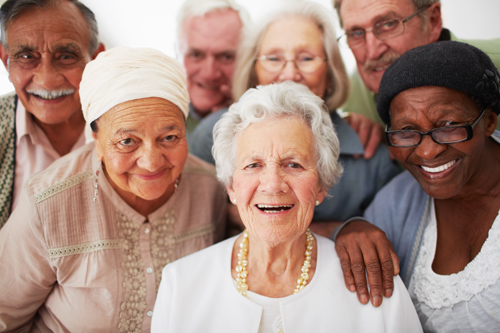More Seniors Than Ever, Says New Census Report

In June 2017, the United States Census Bureau released a population estimate showing that we have more seniors than at any other time in history. Census expert Peter Borsella explains that the aging of the baby boomers, who started turning 65 in 2011, is what’s behind this trend.
Said demographer Lauren Medina, “Our country’s demographic profile is aging and looks a lot different than it did two decades ago. The nation’s median age rose from 35.3 in 2000 to 37.9 in July of 2016.”
Median age means the age where half the population is younger and the other half older. Wait, 37.9 doesn’t seem so old, you might be thinking. But, said Medina, “Consider this: Residents age 65 and over grew by 14.2 million people between 2000 and 2016, making up 15.2 percent of the population. ” The older population now stands at 49.2 million—up from 35 million in 2000.
Here are a few fun facts for your next trivia party:
- In no state did the median age go down.
- Maine is the oldest state, with a median age of 44.6, followed by New Hampshire (43.0) and Vermont (42.7).
- Utah (30.8) is the youngest state, followed by Alaska (33.9) and the District of Columbia (33.9).
- The county with the highest median age is Sumter County, Florida, which jumped from 49.2 years in 2000 to 67.1 years in 2016! As you might guess, Sumter County is home to The Villages, a large and fast-growing retirement community.
What will the continued aging of America mean for our communities, senior services organizations, healthcare system, families, and seniors themselves?
Our communities. On the national, state and local level, increased support services for seniors will be needed to keep these older adults safe, healthy and engaged. Our communities themselves will need more work to make them livable for people of every age. With a never-ending battle over funding, it won’t be easy, warn gerontologists. We all should advocate for these services—for our older relatives, friends and neighbors and eventually for ourselves.
Senior service organizations. We’ll have a continued need for retirement and assisted living communities, skilled nursing facilities, and—the largest trend these days, with more than 90 percent of seniors preferring to “age in place”—in-home care services, from home health care to companion care and senior transportation.
Our healthcare system. Seniors spend more time in the hospital than any other age group, on average. So there will be more hospitalizations. Seniors also are more susceptible to hospital-acquired infections and delirium. And hospital care is very expensive, so preventing a return trip to the hospital is better for the health of seniors and the financial well-being of Medicare. Many hospitals are already adapting to this group of older patients, by providing designated senior wards, senior ER facilities, gerontologists on staff, and even house calls.
Our workplaces. More and more older adults are putting off retirement. Fewer seniors have pensions, and many have failed to save enough for a comfortable retirement, so more older adults must stay on the job. Others continue working because they enjoy their work and the accompanying mental stimulation and social contact. Many seniors will make a late-life career change, and here’s an interesting win-win development: More of them are taking “encore jobs” with senior services organizations, providing care for other older adults.
Our family caregivers. Adult children, spouses and other family members have traditionally provided care for seniors who have physical or cognitive challenges. They would be the first to tell you that caregiving is changing! The baby boomers had fewer children, had a higher divorce rate, and often moved around the country. So there’s a real shortage of family members to help them out when they need it. The longevity trend means that an elder and their adult child might simultaneously need care. More and more parent-child pairs are moving into assisted living communities together.
Senior technologies. From GPS-equipped shoes for tracking dementia patients, to fall-prevention sensors and sophisticated in-home monitoring, technology will take the place of some of the supervision now provided by professional caregivers and family. And some products that are universally used will be adapted to be a better fit for seniors. This includes large print keyboards on phones, adaptive interfaces, senior-focused social media—and, according to the number one request of older users, gadgets that aren’t so darned complicated and aren’t as constantly updated!
Planning is the key to making it work—on the governmental, community, organizational, family and personal level. Let’s make the country a better place for the seniors today and the seniors to come.
Source: IlluminAge AgeWise with information from the U.S. Census Bureau
![Health Concepts [logo]](https://healthconceptsltd.com/wp-content/themes/healthconcepts-corporate/images/logo.png)
